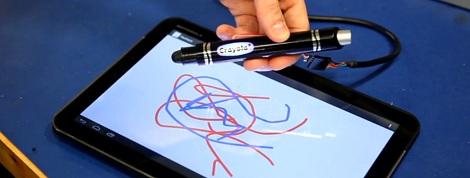Let’s say you’ve got a big bare wall in your home, and you want some art on it. You could hang a poster or a framed artwork, or you could learn to paint a mural yourself. Or, like [Nik Ivanov], you could build a plotter called Mural, and get it to draw something on the wall for you.
The build is straightforward enough. It uses a moving carriage suspended from toothed belts attached to two points up high on the wall. Stepper motors built into the carriage reel the belts in and out to move it up and down the wall, and from side to side. In this case, [Nik] selected a pair of NEMA 17 steppers to do the job. They’re commanded by a NodeMCU ESP32, paired with TMC2209 stepper motor drivers. The carriage also includes a pen lifter, which relies on a MG90s servo to lift the drawing implement away from the wall.
The build is quite capable, able to recreate SVG vector graphics quite accurately, without obvious skew or distortion. [Nik] has been using the plotter with washable Crayola markers, so he can print on the wall time and again without leaving permanent marks. It’s a great way to decorate—over and over again—on a budget. Total estimated cost is under $100, according to [Nik].
We’ve featured some neat projects along these lines before, too. Video after the break.












